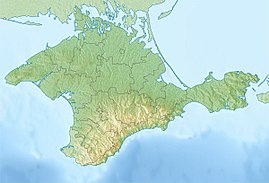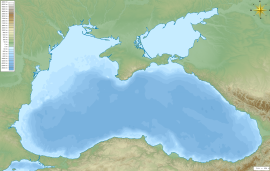Σκυθική Νεάπολις (Greek) | |
 2016 photograph of the supposed tomb of Skilurus | |
| Alternative name | Kermenchik |
|---|---|
| Location | Simferopol, Crimea |
| Region | Taurica |
| Coordinates | 44°56′34″N 34°07′14″E / 44.94278°N 34.12056°E |
| Type | Human settlement |
| History | |
| Founded | 3rd century BC |
| Abandoned | 3rd century AD |
| Cultures | Scythian, Greek |
| Site notes | |
| Ownership | Ukraine (de jure), Russia (de facto) |
| Website | Historical and archaeological preserve of Scythian Neapolis |
Scythian Neapolis (Greek: Σκυθική Νεάπολις), also known as Kermenchik, was an Iranic settlement that existed in the Crimean Peninsula from the end of the 3rd century BC until the second half of the 3rd century AD. It was previously considered a town of the Tauric Chersonesus, and was mentioned by Strabo as being the fortress and palace where Scythian kings resided.[1] It is regarded as the capital of the Late Scythian Kingdom and the capital of Great Scythia.[2] The archaeological ruins sit on the outskirts of the present-day Simferopol. This city was the centre of Crimea's Scythian tribes, led by Skilurus and Palacus. The town ruled over a small kingdom, covering the lands between the lower Dnieper and Crimea. Between the end of the 4th century BC and the beginning of the 3rd century BC, historians suggest that the Kizil-Koba culture occupied the area of Scythian Neapolis before any Scythian artefacts were found; Neapolis was destroyed by the Goths halfway through the 3rd century AD. This settlement was first excavated in 1945 by Schultz and Golovkina.[3][4]


